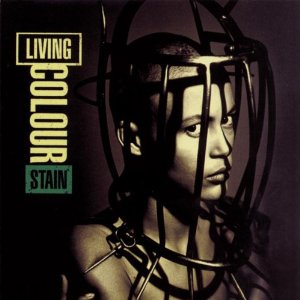8. Fantômas, Fantômas (1999)
This one is a bit of a stretch; it may even be cheating a little bit to include it since it’s not (necessarily) dismissed. On the other hand, it’s primarily recognized by Mike Patton aficionados. That’s fine, but it should have broader appeal for anyone looking for staggeringly original music and may be just what the doctor should have ordered for anyone bored with convention and cynicism. This is challenging music to listen to, and it’s definitely challenging to write about—but that only seems fair since it was quite obviously challenging to conceive and execute.
People who seem disinclined to check this out may be understandably intimidated by the notion of an album without lyrics, particularly when it features one of the eminent vocalists of his generation. More, when that singer is (ostensibly) utilizing an entire album without an intelligible sound other than shrieks, screams and imitations of violent acts, it’s…well, a tough sell. On the other hand, what part of a Melvins, Mr. Bungle and Slayer mash-up could you possibly be unexcited about? (Fantomas, for anyone not in the know, features former Bungle bassist Trevor Dunn, Melvins guitarist and mad genius Buzz Osborne and Slayer drum god Dave Lombardo.)
Once again, it’s challenging to relate what this uber-supergroup’s debut sounds like, in part because it incorporates so many different styles of music. It is decidedly avant-garde work, with the hardcore flourishes one would expect from Osborne and Lombardo. It is also refreshingly, unabashedly out there, which one would expect from Patton—who does not sing so much as employ his seemingly limitless vocal range as a fourth instrument. Impenetrable and abrasive at first listen (Patton sounds like a trapped animal, a human chainsaw and a motorboat engine out of water, sometimes all in a span of ten seconds), this material obliges its audience to surrender expectations and meet Patton on his own anomalous terms.
A great deal of time and effort could be dedicated to debating what it all means, or how he did it (as ostensibly free-wheeling as the material may seem, Patton actually choreographed every second of it before the band ever got involved), and where this recording properly fits in an assessment of Patton’s evolution. In hindsight, Fantômas is very obviously a direction—wayward or ingenious, depending upon the listener—Patton wanted to head in, and he’s never backtracked, for better or for worse. To this listener, it represents the first day of the rest of Patton’s artistic life. Fantômas let him break with what he must have felt were the straightjacket-like conventions and expectations of the traditional rock route, and it’s almost like he had to invent his own language to give free expression to what was boiling around inside his mind.
7. Living Colour, Stain (1993)
Even though Living Colour is still making excellent music today, they are mostly remembered as the band who did “Cult of Personality” two decades and change ago. Some people remember that their second album, Time’s Up was an improvement on the (outstanding) debut, and for a minute Living Colour was one of the biggest bands in the world. Then they made a third album and…that was that—at least for another ten long years. That third album was many degrees harder, darker and more difficult than their first two albums, which might explain why it did not go over. But how to reconcile the lack of love with the fact that in some regards Stain was their best album yet?
Losing the brilliant bassist Muzz Skillings, who bolted after the second album, could have been a crippling blow (he was that good) but when ancient school session wizard Doug Wimbish stepped into the mix the band did not miss a beat—literally. WImbish brought a funky, in your face dynamic and he and drummer Will Calhoun formed an unbreakable rhythm section: deep, elastic and loud. The star of the show, as always, is Vernon Reid, who is a human encyclopedia of sound. From the hat-tip to grunge stylings in “Go Away” to the typically ear-burning pyrotechnics of “Leave It Alone” to the Robert Fripp-esque atmospherics in “Nothingness”, Reid covers all the bases while refining his own idiosyncratic style.
So what’s not to love? Well, for one thing, this is definitely not a flawless record. A handful of songs, like “Ignorance is Bliss” and “This Little Pig” are rather paint-by-number—not to mention lyrically clichéd. Some of the songs, like “Postman” and “Never Satisfied” may have just been too severe for the delicate ears of alternative rock fans, circa ’93. Some of the songs may have been a bit too much, like the disorienting “Hemp” or the mirthfully provocative “Bi”. And none of the remaining songs were destined to be radio hits, and little on this album is as user-friendly as most of the material on the first two albums. Take it or leave it: no other band on the planet could ever make a song like “Wall”, which is capable of shaking you, making you smile and seeing the world with new ears.
All of which may explain why this one did not help Living Colour become the most popular and influential band of the ‘90s, which they would/could/should have been. Even for fans who got it, then, and endorse it now, Stain is a grueling, confrontational album, and one that leaves the listener more than a little exhausted. These are the types of albums that are considered uncompromising, courageous, even ahead of their time. They are also the types of albums that don’t sell a ton of copies or necessarily convert new fans. “WTFF”, indeed.


